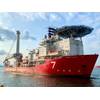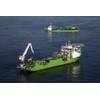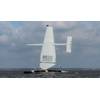Global energy companies have joined forces to fund new research aimed at advancing tropical cyclone forecasting in Northern Australia to further improve offshore safety and mitigate costly disruptions to operations.
Results from the industry-driven research are expected to enhance tropical cyclone response planning and public weather forecasting services for the wider community.
The Industry Technology Facilitator (ITF) has led the collaboration to secure funding for the two-year AU$3.2 million project, which will be carried out by the Australian Bureau of Meteorology. This project builds on the Bureau’s research into tropical cyclone forecast and warning services.
Chevron Australia, Shell Australia Pty Ltd, Woodside, and INPEX will jointly fund the development of new systems to improve tropical cyclone prediction, including the associated wave fields over the Western Australian Shelf and surrounding waters.
ITF regional manager Australia Peter Brazier said the research will target enhanced prediction of the impact of tropical weather systems, and which low pressure systems are likely to continue to develop into cyclones. The research is also expected to extend the number of days in advance that the Bureau can accurately forecast the track of a cyclone.
“Operational planning and risk mitigation by the offshore industry requires high-quality weather and wave guidance and the ability to determine multiple scenarios to manage risk,” he said. “Being able to predict tropical cyclone formation and development earlier and more accurately reduces risk, improves decision making and could also reduce costs by decreasing operational down-time and unnecessary interruptions to construction operations.”
Bureau of Meteorology head of research, Dr. Peter May, said the research will provide tangible benefits for the oil and gas industry, with research outcomes eventually built into ongoing improvements in public weather forecasting for the community.
Forecast accuracy continues to improve through investment in three critical areas: access to high volumes of accurate, real-time weather observations, supercomputing capacity to analyze this data and run higher resolution forecasting models and new research initiatives to improve forecasting models.
“Greater accuracy in cyclone forecasting will ultimately enable operators to calculate risk more effectively and improve operational decisions,” Dr. May said.
















 February 2024
February 2024



